
Túpac Amaru was the last Sapa Inca of the Neo-Inca State, the final remaining independent part of the Inca Empire. He was executed by the Spanish following a months-long pursuit after the fall of the Neo-Inca State.

Cusco or Cuzco, is a city in southeastern Peru near the Urubamba Valley of the Andes mountain range. It is the capital of the Cusco Region and of the Cusco Province. The city is the seventh most populous in Peru; in 2017, it had a population of 428,450. Its elevation is around 3,400 m (11,200 ft).

Pachacuti Inca Yupanqui, also called Pachacutec, was the ninth Sapa Inca of the Kingdom of Cusco which he transformed into the Inca Empire. Most archaeologists now believe that the famous Inca site of Machu Picchu was built as an estate for Pachacuti.

Huayna Capac was the third Sapa Inca of Tawantinsuyu, the Inca Empire. He was the son of and successor to Túpac Inca Yupanqui., the sixth Sapa Inca of the Hanan dynasty, and eleventh of the Inca civilization. He was born in Tumipampa and tutored to become Sapa Inca from a young age.

Sinchi Roca, Sinchi Rocca, Cinchi Roca, Sinchi Ruq'a or Sinchi Ruq'a Inka was the second Sapa Inca of the Kingdom of Cusco and a member of the Hurin dynasty.

Manco Inca Yupanqui was the founder and monarch of the independent Neo-Inca State in Vilcabamba, although he was originally a puppet Inca Emperor installed by the Spaniards. He was also known as "Manco II" and "Manco Cápac II". He was one of the sons of Huayna Capac and a younger brother of Huascar.
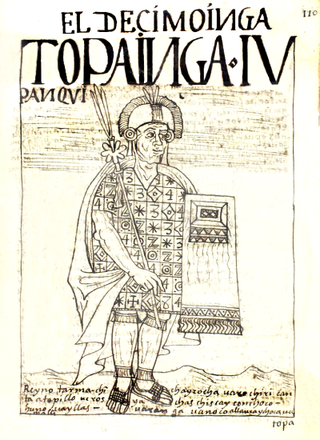
Topa Inca Yupanqui or Túpac Inca Yupanqui, translated as "noble Inca accountant," was the tenth Sapa Inca (1471–93) of the Inca Empire, fifth of the Hanan dynasty. His father was Pachacuti, and his son was Huayna Capac. Topa Inca belonged to the Qhapaq panaca. His qoya was his older sister, Mama Ocllo.

The Sapa Inca was the monarch of the Inca Empire (Tawantinsuyu), as well as ruler of the earlier Kingdom of Cusco and the later Neo-Inca State. While the origins of the position are mythical and originate from the legendary foundation of the city of Cusco, it seems to have come into being historically around 1100 CE. Although the Inca believed the Sapa to be the son of Inti and often referred to him as Intip Churin or 'Son of the Sun,' the position eventually became hereditary, with son succeeding father. The principal wife of the Inca was known as the Coya or Qoya. The Sapa Inca was at the top of the social hierarchy, and played a dominant role in the political and spiritual realm.

Vitcos was a residence of Inca nobles and a ceremonial center of the Neo-Inca State (1537-1572). The archaeological site of ancient Vitcos, called Rosaspata, is in the Vilcabamba District of La Convención Province, Cusco Region in Peru. The ruins are on a ridge overlooking the junction of two small rivers and the village of Pucyura. The Incas had occupied Vilcabamba, the region in which Vitcos is located, about 1450 CE, establishing major centers at Machu Picchu, Choquequirao, Vitcos, and Vilcabamba. Vitcos was often the residence of the rulers of the Neo-Inca state until the Spanish conquest of this last stronghold of the Incas in 1572.

Lloque Yupanqui was the third Sapa Inca of the Kingdom of Cuzco and a member of the Hurin dynasty.
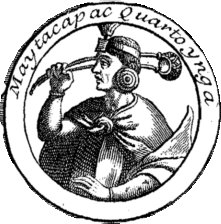
Mayta Cápac was the fourth Sapa Inca of the Kingdom of Cuzco and a member of the Hurin dynasty.
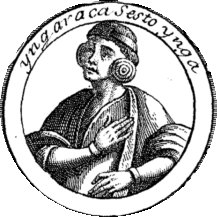
Inca Roca was the sixth Sapa Inca of the Kingdom of Cusco and the first of the Hanan ("upper") Qusqu dynasty. His wife was Mama Michay, and his son was Yawar Waqaq.

Sayri Túpac was an Inca ruler in Peru. He was a son of siblings Manco Inca Yupanqui and Cura Ocllo. After the death of his mother in 1539 and of his father in 1544, both at the hands of Spanish conquerors, he became the ruler of the Neo-Inca State in Vilcabamba. He ruled until his death in 1560.
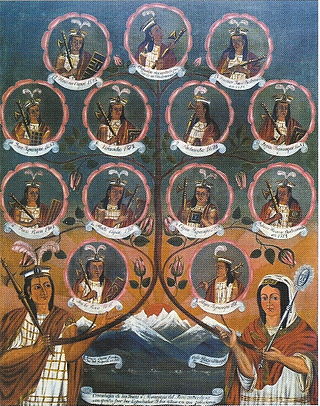
The Incas were most notable for establishing the Inca Empire which was centered in modern day South America in Peru and Chile. It was about 2,500 miles from the northern to southern tip. The Inca Empire lasted from 1438 to 1533. It was the largest Empire in America throughout the Pre-Columbian era. At the peak of the Inca Empire, it was the largest nation in the world and to this day is the largest native state in the western hemisphere. The Inca civilization was located from north to south of the western hemisphere of South America. The Inca state was known as the Kingdom of Cuzco before 1438. Over the course of the Inca Empire, the Inca used conquest and peaceful assimilation to incorporate the territory of modern-day Peru, followed by a large portion of western South America, into their empire, centered on the Andean mountain range. However, shortly after the Inca Civil War, the last Sapa Inca (emperor) of the Inca Empire was captured and killed on the orders of the conquistador Francisco Pizarro, marking the beginning of Spanish rule. The remnants of the empire retreated to the remote jungles of Vilcabamba and established the small Neo-Inca State, which was conquered by the Spanish in 1572.

Paullu Inca was a puppet Sapa Inca installed by the Spaniards after the previous Sapa Inca, Manco Inca Yupanqui, rebelled against the Spanish and established the small Neo-Inca State in Vilcabamba.
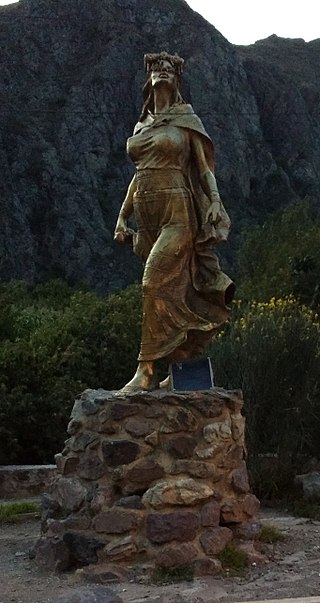
Cura Ocllo was an Inca queen (Coya), the wife and sister of Manco Inca Yupanqui, puppet and later remnant ruler of the Inca Empire from 1533 until his death in 1544. Her abduction and rape by Gonzalo Pizarro contributed to the split between her spouse and the Spanish and the start of the Inca rebellion against the Spanish.
The Tawantinsuyu or Inca Empire was a centralized bureaucracy. It drew upon the administrative forms and practices of previous Andean civilizations such as the Wari Empire and Tiwanaku, and had in common certain practices with its contemporary rivals, notably the Chimor. These institutions and practices were understood, articulated, and elaborated through Andean cosmology and thought. Following the Spanish conquest of the Inca Empire, certain aspects of these institutions and practices were continued.
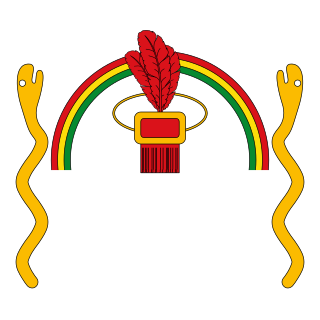
The Neo-Inca State, also known as the Neo-Inca state of Vilcabamba, was the Inca state established in 1537 at Vilcabamba by Manco Inca Yupanqui. It is considered a rump state of the Inca Empire (1438–1533), which collapsed after the Spanish conquest in the mid-1530s. The Neo-Inca State lasted until 1572, when the last Inca stronghold was conquered, and the last ruler, Túpac Amaru, was captured and executed, thus ending the political authority of the Inca state.

Cusi Huarcay (1531-1586), was a princess and queen consort of the Inca Empire by marriage to her brother, the Sapa Inca Sayri Túpac . She was born to Manco Inca Yupanqui and Cura Ocllo. She was the mother of Beatriz Clara Coya (1556-1600).

















